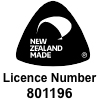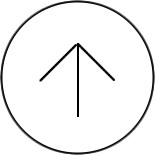Preliminary Checks
Check that all exposed surfaces of the substrate are straight, plumb, and undamaged. If any loose substrate material is identified, it must be removed and replaced.
Existing landscaping must be protected and/or removed in consultation with the project owner to allow accurate cladding installation in accordance with Rockcote technical details.
Fixing a new exterior cladding can only be achieved if a) the existing brick/stone cladding is being removed or b) the substrate is a solid-filled masonry block.
Check with your local BCA, as consent and inspections may be required.
Wall Alignment
Using a straight edge, check joints are smooth and that the wall is flat and true. The Rockcote system installation is not designed to straighten deviations which exceed the specified Rockcote Render System thickness.
Weep Holes
Weep holes must be kept clear of Render unless an alternative solution is accepted by the BCA.
Existing Services/structure
General
All services must be back-flashed against the building wrap or against the existing weatherboards if they remain in place.
Plumbing
Plumbing services may need to be extended beyond the ‘new’ outside cladding line.
Electrical
Electrical services may need to be extended beyond the ‘new’ outside cladding line, and wiring must be wrapped with conduit.
Roofing
Face fixed fascia, roof and apron flashings may need to be extended/replaced to allow for extra cladding thickness. All external spouting must be removed prior to cladding installation.
Clean Surface
When the substrate has been left for a period of time, dust and dirt may build up on the surface. This contamination must be removed prior to render application.
Remove all moss and mould
Thoroughly clean down to remove all loosely adhered material. Treat areas of moss or mould infestation with Resene Moss & Mould Killer correctly diluted with clean water. Leave for up to 48 hours to achieve full kill. Further applications may be needed for heavy infestations. Wash thoroughly with clean water to remove residues. For difficult areas carefully waterblast at 3000 psi to remove all dirt, chalk, moss and mould residue and any other contaminants. Allow the surface to dry out for at least 24 hours.
Remove powdery layers and efflorescence.
Remove any powdery layers, laitance or efflorescence by vigorous wire brushing or preferably water blasting. Thoroughly degrease by scrubbing or brushing down with Resene Roof Wash and Paint Cleaner to remove all dirt, dust, grease, chalk, cobwebs and other contaminants. Rinse clean with copious amounts of clean water, and the test surface is degreased by wiping with clean cotton wool. Repeat the process if necessary.
Improve adhesion
If you are applying the Rockcote system directly to the existing substrate, the wall must be wetted down, or apply a solution of Rockcote Acrylbond and Water – ratio 1 part Acrylbond: 4 parts water to minimise the suction of the substrate.
Allows the render to maintain moisture content for longer, providing greater working time. This process assists with the initial hydration / curing of the render application.
Masking
Before applying the render, masking must be applied to all joinery, pipes, roofs, and all areas likely to be marked by the render. Use drop cloths and ground covers to keep the working areas clean.
Colour selection
For more information about light reflectance values refer to the technical note on the Resene Construction webpage at the following link https://reseneconstruction.co.nz/light-reflectance-values/






